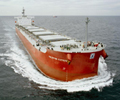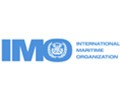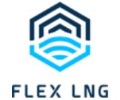Trade Review: China’s policies cast shadow over price strength of iron ore

This report is part of the S&P Global Platts Metals Trade Review series, where we dig through datasets and digest some of the key trends in metallurgical coal, iron ore, scrap and alumina. We also explore what the next few months could bring, from supply and demand shifts, to new arbitrages, and to quality spread fluctuations.
Strong iron ore prices have been touted as a key indicator of an emerging post-pandemic commodity super-cycle since reaching a nine-year high of $178.45/dmt March 4, but volatility since then provides a sneak peek into how China’s emissions curbs could tilt iron ore prices off-course in the months to come.
Frequent and strict steel production curbs in China have dampened sustained price strength in recent weeks, despite a recovery in downstream domestic steel demand.
Stepped-up production curbs in the steelmaking hub of Tangshan to improve air quality and in response to a central government target of reducing crude steel output in 2021 have divided the market outlook on price direction, as crimping steel output can potentially result in opposing outcomes.
On one hand, steel production curbs could suppress iron ore demand, causing prices to fall. Proponents of this view note the Platts Iron Ore Index or IODEX recorded its largest single-day loss on record March 9, plunging $10.55/dmt on the day, after Tangshan mills were ordered to lower production to meet level 1 red alert response procedures due to heavy pollution. The last time the level 1 red alert response was activated was in 2017.
On the other hand, downstream steel demand recovery and reduced supply could drive prices and margins higher — encouraging higher steel production, and therefore boosting demand for iron ore.
Historically, the latter scenario has prevailed most often in China, largely due to the loose implementation and localized nature of steel production curbs. Some mills simply did not adhere to the cuts. During a spot check in March, four Tangshan mills were found operating at higher rates than allowed and falsifying records. However this time, the production curbs were subsequently made more stringent.
Tangshan accounts for around 14% of China’s crude steel output, and the curbs could prompt mills elsewhere to increase production, which could more than offset the reduction in Tangshan.
However, other regions could also potentially introduce similar curbs.
Spot premiums for Pilbara Blend Fines rose sharply in late March to reach a record high of $8.10/dmt on March 29.
Again market opinion was divided: Some market sources attributed the surge to speculators having short-sold physical cargoes earlier in the month as Tangshan intensified production curbs, while limited spot supply subsequently forced these speculators to pay unprecedented premiums to secure cargoes.
Others pointed instead to robust steel margins and tight supply as fueling the aggressive position-taking.
Whether the surge was due to a flurry of short coverings or establishing new longs, it highlighted the escalating price risks in the near term.
Price spread widens between grades
The spread between the 65%, 62% and 58% Fe iron ore indexes diverged twice, at the start and end of Q1, due to different drivers.
Rising coke prices drove the initial divergence; as the price of coke, which can remove impurities in iron ore, reached record highs, blast furnace economics started to favor higher iron content, lower-impurity ores, as their savings on coke more than offset the extra cost of higher-grade ore.
The indexes diverged again in late March, this time due to widening steel margins. As steel demand continued to recover, the curbs in Tangshan tightened supply, lifting steel prices and margins. Mills elsewhere in China reacted to these price signals by switching ore blends to higher grades to maximize output.
This was a double whammy for the 58% Fe index, both reducing demand for lower-grade ore and increasing prices for the 65% Fe index, in turn exerting further downward pressure on the 58% Fe index, as mills weighed the price of high-low grade combinations against the medium grade to optimize cost.
The spread between the indexes could remain wide in 2021 as curbs in Tangshan continue to support steel margins.
Some contaminants, such as alumina and silica, in iron ore need to be removed using coke during the iron-making process. The higher these contaminant levels are, the more coke is needed. Coke prices in China peaked around Lunar New Year — as did alumina and silica price adjustments to the IODEX, as steel mills’ tolerance of contaminants is inversely proportionate to the cost of coke.
Direct feed premiums typically come under pressure in March as heating season demand in China wanes after winter. However this year the tightened supply of Australian lump, stringent sintering curbs in Tangshan in early March and a strong rebound in demand outside of China lifted direct feed premiums, with the lump premium in particular reaching a record high of 54.25 cents/dmtu on March 23.
Direct feed premiums at crossroads
China’s production curbs and emission cuts favor demand for direct feeds over fines. Higher steel margins bolstered by the production curbs could encourage mills to use more high-grade materials, including direct feeds, in Q2. Direct feeds also produce less emissions, which is a focus of China’s current 14th Five-Year Plan.
However price downside is possible as the sinter feed ratio increases after winter, reducing demand for direct feeds. Mills have also started to free up lump supply from their contracted volumes due either to lower requirements or profitability considerations.
The steel production curbs have reduced Tangshan mills’ iron ore requirements, prompting the release of excess contract volumes, including lump, into the market. Some mills in northeast and south China have also started to on-sell their contracted lump cargoes and rely more on sintering fines instead. Australian lump supply may also increase in Q2 as cyclone season passes.
Source: Platts

 Hellenic Shipping News Worldwide Hellenic Shipping News Worldwide, Online Daily Newspaper on Hellenic and International Shipping
Hellenic Shipping News Worldwide Hellenic Shipping News Worldwide, Online Daily Newspaper on Hellenic and International Shipping






















 PG-Software
PG-Software